Survey
Sleep: Still Growing
New HMEB study shows providers predict 7 percent growth this year, according to our latest sleep survey.
- By Joseph Duffy
- Jan 12, 2012
With cuts, caps, competitive bidding and the economy all stifling the revenue potential of the home medical equipment industry, HME sleep revenue growth in 2011 stayed in the mid-single digits (5.7 percent), a slight drop from 2010 (6.4 percent), according to a recent HME Business, Respiratory & Sleep Management and Mizuho Securities USA survey of 75 home medical equipment dealers. Only 18 percent of respondents reported a decline in sleep revenue during 2011 and only 16 percent expect a decline in 2012. While growth continues to slow, the rate of slowing has moderated and growth remains in the mid-single digits.
Despite a slower-than-expected 2011 and the perception that the economy will continue to anchor recovery, respondents expect their sleep revenue to grow by 7 percent on average through 2012.
- About 23 percent of respondents saw no change in sleep revenue in 2011.
- About 18 percent of respondents predict no sleep revenue growth in 2012.
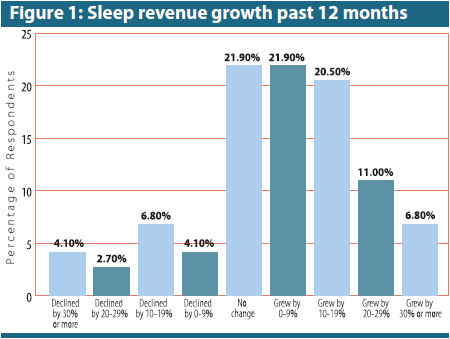
ECONOMIC INFLUENCE
In the next 12 months, despite some gradual improvement in the economy, respondents expect the slow economy to take a 2 percent bite out of potential sleep revenue growth (up from 1.5 percent from last year’s survey) and home testing to increase growth by 1.6 percent (down from 2.7 percent in our 2Q11 survey).
- 37 percent of respondents said the economy would have no impact on growth
- 4 percent of respondents said the economy would help increase growth by 10 percent or more
- 7 percent of respondents said the economy would help decrease growth by 10 percent or more
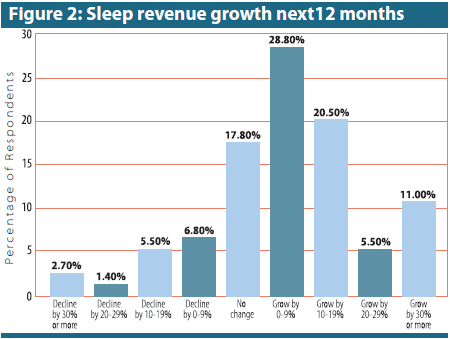
ROUND AND ROUND
Only 26 percent of respondents reported that their companies had business in areas that were included in Round One of competitive bidding. Within this subset of respondents, 29 percent report winning a round one contract for CPAP.
A majority (70 percent) of the group that won contracts indicated that their firms had negotiated lower prices on sleep products with their existing manufacturers while 60 percent indicated that their firms have not changed the way they treat Medicare patients. However, 50 percent of respondents indicated that their companies have switched to lower-priced manufacturers, which is an increase from 29 percent in 2010.
Perhaps nothing is more concerning right now to HME providers regarding sleep revenue growth than Round Two of competitive bidding. About 55 percent of respondents report being located in a city affected by Round Two, and of those involved in Round Two, 74 percent plan to bid.
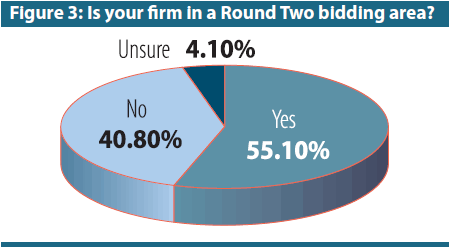
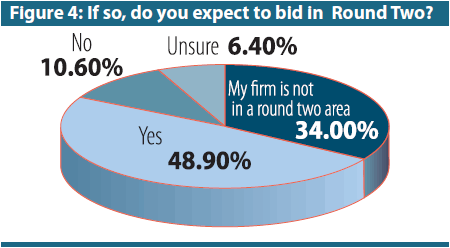
Although reimbursement declined about 34 percent in Round One bidding, respondents said on average that Round Two will see about a 19 percent decline to CPAP reimbursement. The high end was 5 percent of respondents saying the discount would be 41 percent to 45 percent, where the low end showed 17 percent of respondents indicating there would be no discount.
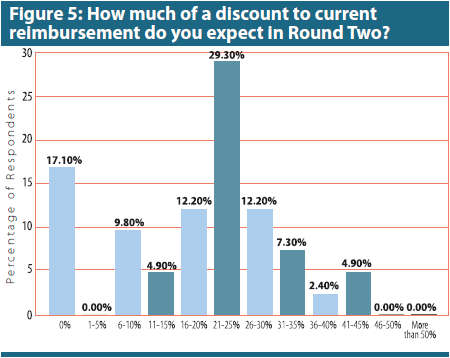
As with the HMEs that are in Round One areas, HMEs in Round Two also expect to seek better pricing, although these HME providers seem more willing to switch to lower-priced manufacturers than those providers in Round One. Nearly half (44 percent) have already begun to implement these measures. And nearly all (90 percent) of the respondents expect other insurers to follow Medicare with cuts of their own.
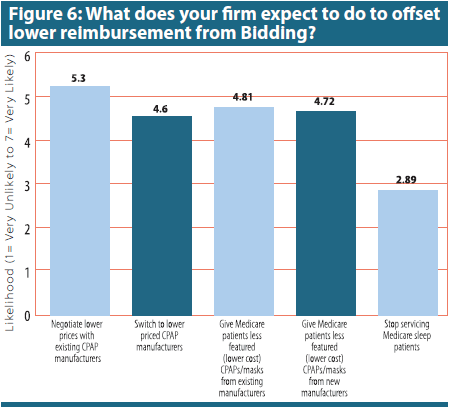
Survey takers were asked to grade the likelihood (1 being very unlikely and 7 being very likely) that they would take
certain actions to offset the decline in reimbursement from Round Two of competitive bidding. The most likely response to Round Two cuts and the resulting lower reimbursement from bidding was to negotiate lower prices with existing CPAP manufacturers (5.3), while the least likely response was to stop servicing Medicare sleep patients (2.9).
AUTO-SETTING FLOW GENERATORS
Respondents were asked to name the percentage of their sleep patients who receive auto-setting flow generators. According to respondents, auto-setting flow generators are being used for 40 percent of patients and this looks likely to increase to 42 percent of patients in the next 12 months. Auto-setting flow generators sell for a premium and as a result, an increased use of autosetting flow generators to drive a positive mix shift is expected.
MASK REPLACEMENT
One frequently noted driver of the sleep market has been increasing mask replacement rates. While insurers typically cover two to four masks per year, patients are generally not taking advantage of this and replacing masks as frequently as they should. As oxygen reimbursement has been squeezed, HMEs have increasingly focused on sleep therapy as a growth opportunity and have implemented programs to follow-up with patients about masks and other disposable CPAP products (filters, tubing, etc.) in order to increase replacement rates.
According to respondents, patients used on average 2.13 masks in 2011 and they expect this to increase to 2.36 masks per year in the next 12 months. While this seems like a small change, it is estimated that it could add several points to sleep market growth. However, with patients now using more than two masks per year, the effect of increased replacement rates is probably diminishing since it is estimated that this measure will max out at around 2.4 masks per year (2 masks per year for privately insured patients x 80 percent of payer mix + 4 masks per year for Medicare patients x 20 percent of payer mix = 2.4 masks per year).
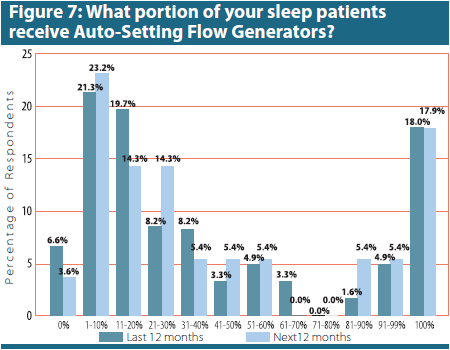
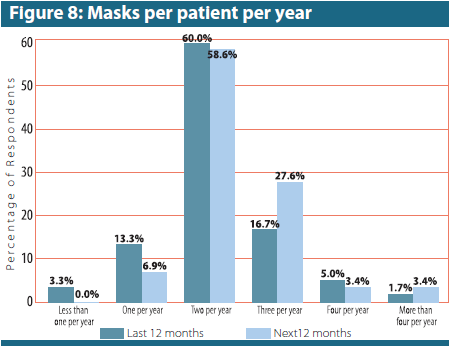
This article originally appeared in the Respiratory & Sleep Management February 2012 issue of HME Business.
About the Author
Joseph Duffy is a freelance writer and marketing consultant, and a regular contributor to HME Business and DME Pharmacy. He can be reached via e-mail at [email protected].